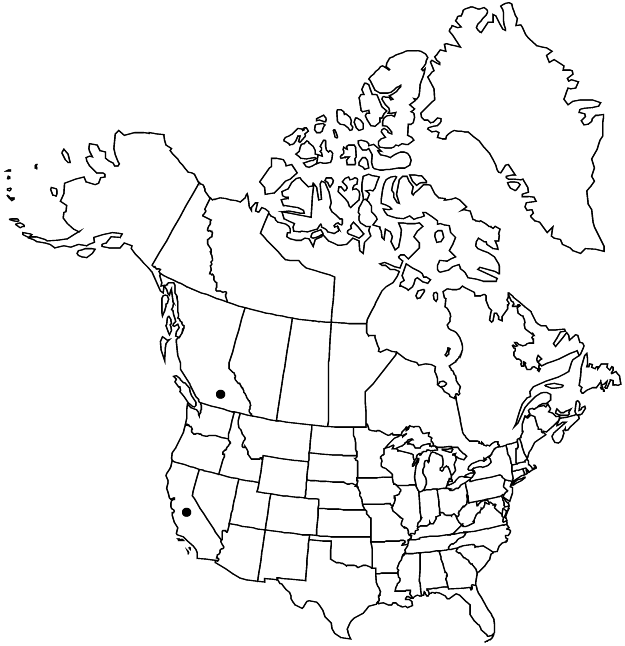Petrorhagia nanteuilii
Bull. Brit. Mus. (Nat. Hist.), Bot. 3: 164. 1964.
Plants annual. Stems erect, simple or branched, (20–) 30 (–52) cm; internodes glabrous or midstem and proximal ones minutely stipitate-glandular. Leaves: sheath (2–) 3–4 mm, 1.5–2 times as long as wide; blade 3-veined, linear, 10–25 mm, margins scabrous. Inflorescences capitate; inflorescence bracts and involucel bracteoles enclosing flowers, broadly ovate, brown-scarious, apex of outer bracts mucronate, of inner bracts obtuse or mucronate. Pedicels 0.1–2 mm. Flowers: sepals (5–) 10–12 mm; petals pink to slightly purplish, primary-veins 3, at least center vein darkly colored near base of blade, apex obcordate or 2-fid. Seeds shield-shaped, (1.3–) 1.5–1.8 mm, tuberculate. 2n = 60 (Europe).
Phenology: Flowering late spring–summer.
Habitat: Roadsides
Elevation: 0-200 m.
Distribution

Introduced; B.C., Calif., w Europe, nw Africa, in South America, Australia
Discussion
Petrorhagia nanteuilii is known from two counties in northern California (first collected in 1956) and a single site in British Columbia. It may be an alloploid derived through hybridization between P. prolifera and P. dubia; recent attempts at crossing the latter two have failed (S. M. Thomas and B. G. Murray 1983).
Selected References
None.